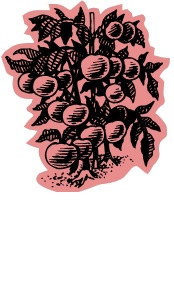 Creating a Vegetable Garden - February 19, 2014 Jeff Schalau, Agent, Agriculture & Natural Resources University of Arizona Cooperative Extension, Yavapai County Seed catalogs have been appearing in the mail and experienced vegetable gardeners are making plans. Its never too early to start preparing for your garden, especially if you are starting from scratch. In preparation, seeds can be started, compost piles created, but most importantly, selecting and preparing the best possible garden site is key to success. Below are some pointers for getting off to a good start. The best vegetable gardening sites are in full sun. However, many crops will produce adequately on 6 to 8 hours of full sun per day. Root and leafy crops (carrots, turnips, beets, leaf lettuce, chard, etc.) can tolerate a little bit more shade than this. Be mindful that shadows will change over the course of the year with the angle of the sun. Avoid planting vegetables on the north sides of buildings or near trees. If weeds are present, then get after them as soon as you can. Prevent annual weeds from going to seed by pulling or hoeing them out prior to flowering. Perennial weeds like bermudagrass are more labor intensive and take a longer period to control. Glyphosate herbicide, when correctly used, is very effective at killing bermudagrass. However, the grass must be actively growing to achieve effective control this means you will need to wait until summer to apply it. There are other methods for bermudagrass control, but none are 100% effective. A reliable source of irrigation water is critical to successful vegetable gardening in Arizona. Many Verde Valley properties are irrigated using ditch-delivered water. Non-ditch served properties may require installation of water lines. To prevent frozen/broken lines, you must bury your pressurized water main 18-24 inches. You should always install a backflow preventer to avoid potable water contamination. For year round use, consider installing a freeze proof yard hydrant in or near your garden location. Fencing is another consideration. If you are out on the edge of town where wildlife is present, then you must determine which species you will be trying to exclude. Deer, rabbits, squirrels, gophers, woodrats, and javelinas are our most common garden nuisance species. For rabbits and javelina, a sturdy four foot tall fence of chain link or woven wire with 2 feet poultry wire along the base is adequate. Gophers, squirrels and woodrats are difficult to exclude. For gophers, you may consider creating an underground barrier of hardware cloth. This should be at least 2 feet deep. Squirrels and woodrats can climb as well as dig and may require complete enclosure with poultry wire. A compost area is another good idea when vegetable gardening. It seems there is never enough compost for the garden and it reduces waste going to our landfills. Many gardeners prefer compost bins to a simple heap. Bins can be constructed out if concrete block, sheet metal, recycled pallets, or other materials. The compost area should be near your garden. Composting is an art that you learn over time given the raw materials you have available to you. I have written about composting in many previous Backyard Gardener columns (available on-line at the website listed below). Avoid areas with extremely rocky or compacted soils. In these situations, consider using raised beds filled with imported top soil. These can be made of various materials depending on your budget and what you have available. Many gardeners like concrete block walls for raised beds. Rot resistant wood, such as redwood, can also be used. Most vegetable gardeners avoid CCA (chromated copper arsenate) treated lumber or creosote coated railroad ties around edible crops. Starting a vegetable garden from scratch sounds like a lot of work and it is. However, when the above factors are considered, you will have a convenient, functional vegetable garden space that will serve you for a long time. See below for links to additional vegetable gardening information. Follow the Backyard Gardener on Twitter use the link on the BYG website. If you have other gardening questions, call the Master Gardener help line in the Camp Verde office at 928-554-8999 Ext. 3 or e-mail us at verdevalleymg@gmail.com and be sure to include your name, address and phone number. Find past Backyard Gardener columns or provide feedback at the Backyard Gardener web site: http://cals.arizona.edu/yavapai/anr/hort/byg/. Additional Resources Ten Steps to a Successful Vegetable Garden, University of Arizona Cooperative Extension http://cals.arizona.edu/pubs/garden/az1435.pdf Fertilizing Home Gardens in Arizona, University of Arizona Cooperative Extension http://cals.arizona.edu/pubs/garden/az1020.pdf The Arizona Master Gardener Manual, University of Arizona Cooperative Extension http://ag.arizona.edu/pubs/garden/mg/ |